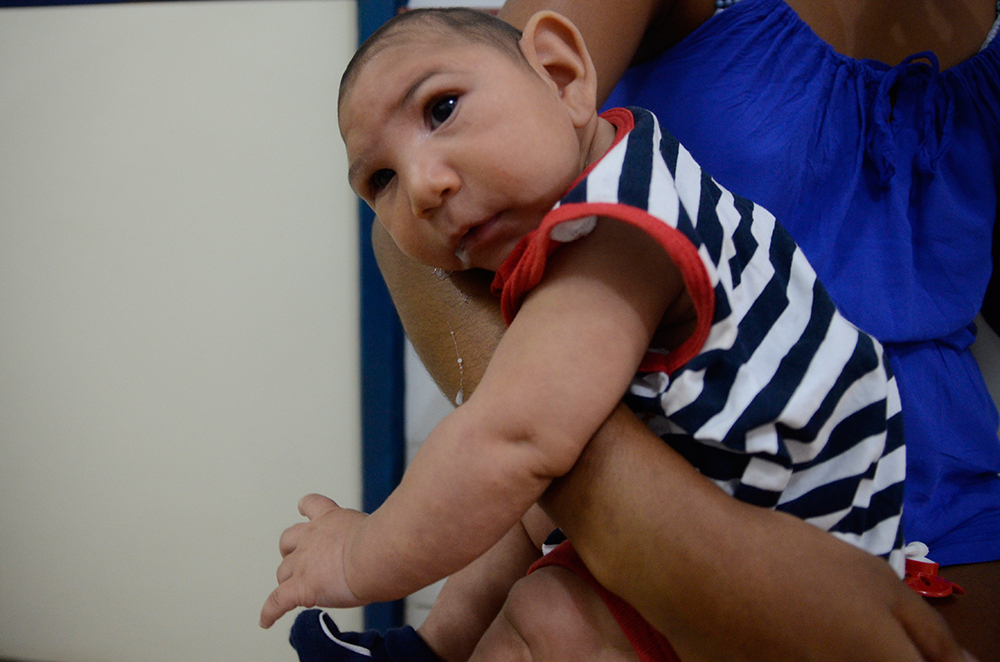
Before the word Zika entered the public lexicon, few people had heard of microcephaly, yet this birth defect existed well before the mosquito-transmitted virus—and reports of Brazilian babies born with abnormally small heads—captured public attention.
Microcephaly—by definition, "small head"—is a rare birth defect in which a child's head is much smaller than normal and the brain hasn't developed normally. The condition is diagnosed when a child's head circumference measures less than the third percentile on standard growth charts, explains Kathryn Johnson, M.D., medical director of the newborn nursery at Parkland Hospital and an attending physician at Children's Health and Parkland Hospital in Dallas.
That smaller-than-normal size signals a potential problem, because brain growth drives head growth. "Microcephaly implies that there is a lack of brain development," says David J. Mathison, M.D., mid-Atlantic medical director for PM Pediatrics. Treatment options are limited, though appropriate diagnosis and early intervention could improve a child's quality of life.
Microcephaly and Zika Virus
The spread of the Zika virus has pushed microcephaly to the forefront of the news, but the jury is still out on whether it's behind the recent spike of newborns with abnormally small heads and incomplete brain development. The Centers for Disease Control and Prevention (CDC) says a "very strong" link has been found between the virus and the birth defect, but more research is needed before it can be confirmed. Dr. Johnson agrees: "Babies with microcephaly have been born to women infected with the Zika virus during pregnancy, but investigations are under way to confirm this association."
Causes
The most common causes of microcephaly include:
Diagnosis
Microcephaly is typically diagnosed at the end of the second trimester or the beginning of the third trimester of pregnancy, when the fetus's head is measured by an ultrasound. It can also be assessed at the time of birth, Dr. Johnson says. (Note: Health-care providers often wait about 24 hours after birth to measure an accurate head circumference because the head typically compresses during birth.)
Further testing will depend on suspected causes. "Often, if a small head runs in the family, we will not do any further testing but just follow the development of the child," says Gary Clark, M.D., chief of neurology service at Texas Children's Hospital. "If the cause is unknown, we may do imaging with a CT scan or MRI." These tests can reveal possible causes and give health-care providers more information about the brain's development.
All infants born with microcephaly undergo a complete physical examination, imaging of the brain, and laboratory tests aimed at identifying the cause of the microcephaly. If a child with microcephaly is born to a mother who has been in an area where Zika virus transmission has been documented, additional testing may be needed. The CDC has issued guidelines for testing and management of these infants, which could include blood testing, a head ultrasound, an ophthalmologic evaluation, and detailed hearing screening, says Dr. Johnson.
Treatment & Prognosis
Some children with microcephaly, particularly those born into families with small heads, won't have any health problems and will develop normally. Others could have severe developmental delays, including difficulty talking, eating, and moving. Further complications include seizures, hearing and vision problems, and intellectual disability. "The most important thing that we can do for a child with microcephaly is to determine the cause," Dr. Clark says. "That will tell us what to expect for the future."
"Parents need to work closely with their pediatricians to support the needs of these infants," Dr. Johnson says. "Developmental monitoring and screening during the first year of life is recommended for all children with microcephaly, including those with congenital Zika virus infection." Frequent medical visits allow health-care providers to carefully track a child's growth and development, and make referrals to medical specialists as appropriate.
If your child has microcephaly, you'll likely develop a whole network of health-care professionals, including a pediatrician, child neurologists, and speech, physical and occupational therapists. Starting early intervention services as soon as possible could improve your child's development. "I encourage a fertile environment with lots of stimulation and love," Dr. Clark says. "Seeking out a specialized program can also improve outcomes."
